It must be over 20 years since I last found myself in this mildly contorted position behind the offset pedals and steering wheel of a Porsche 964, but it is immediately (and slightly uncomfortably) familiar.
I dab the accelerator and there’s the unmistakable sound of an air-cooled flat-six emanating from behind and sending a rumble through my seat. Good vibrations, as they say.

Then, just as quickly, they’re gone as Justin Lunny, CEO of Everrati, taps an app on his phone and the car falls silent.
For there is no internal combustion at work in this 1991 Porsche 911, with cylinders and transmission replaced by batteries and electric motor. That sound was convincingly synthesised, but synthesised nonetheless. What will driving a car whose character is so defined by its engine – and its positioning – be like when the engine is no longer there?
Everrati’s director of engineering Mike Kerr stresses that the goal from the get go has been to maintain the essence of the 911. It may be a machine for the digital age, powered by electrons like these 10 electric classic car conversions, but the feeling is that of an analogue sports car.
“We’re taking a real approach of if it isn’t broken, don’t fix it. These are iconic cars for a reason,” says Kerr who previously worked for McLaren and Lotus. As a result the 964’s hydraulic power assisted steering and brakes are unchanged, apart from now having their pump and servo being driven by electric motors. “Those features are a really intrinsic part of what makes it so successful,” he adds.
Also critical to the 911’s character is its mass – and how and where it carries it. Surprisingly the Everrati is actually lighter than its donor car and it maintains the same 60:40 rear/front weight distribution by hanging 16 battery cells behind the rear axle and eight more over the front wheels. The motor, which is currently a Tesla unit, drives the rear wheels through a single-speed transmission and torque-sensing differential. Kerr says that four-wheel drive using wheel hub motors was considered but the added weight and suspension changes required would have altered the way the car drove too much. Even if it would have made it faster.
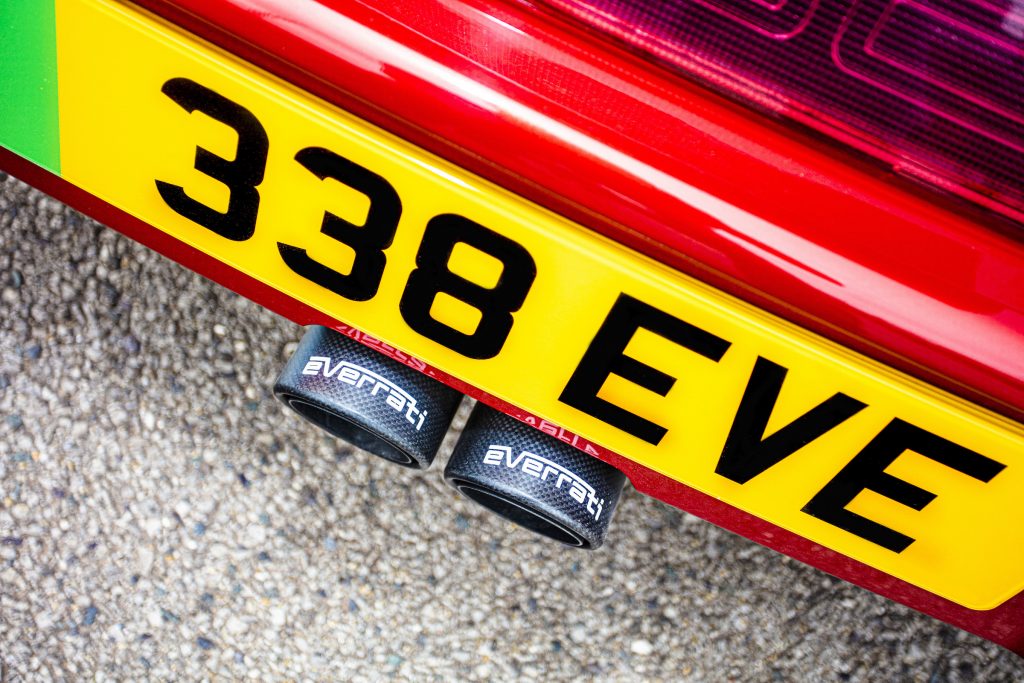
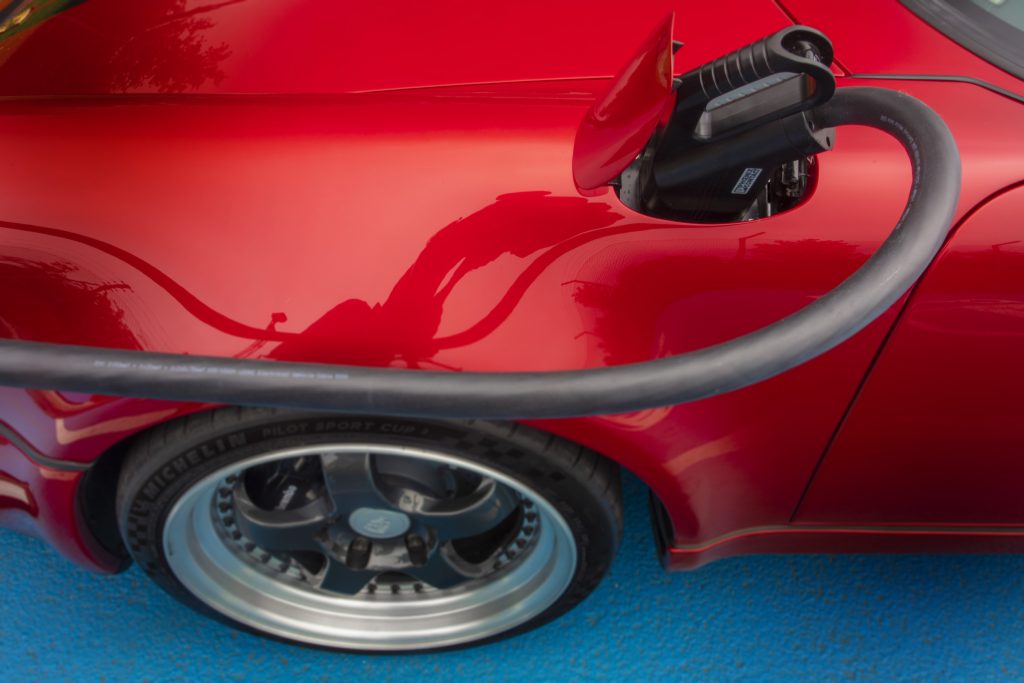
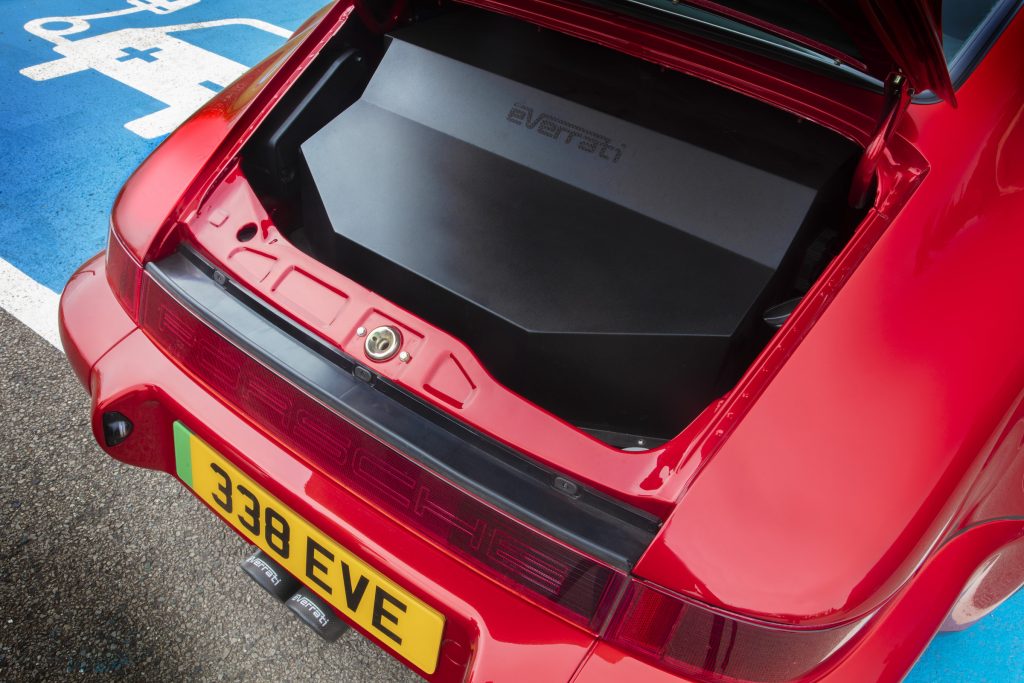
Everrati’s wide-bodied demonstrator wears carbon front wings, a carbon roof and carbon bonnet to reduce weight further still, but an all-steel car would only be 7kg heavier than standard. The deep dished Fuchs-style split rim alloys on the car are gorgeous, if perhaps a little excessive in size for my taste. Although perhaps I should reserve judgement until I try to send over 500bhp to the asphalt via the sticky Michelin Pilot Cup tyres.
Other than these and the cute little duck tail you’d struggle to identify this Everrati as anything other than a very nice 964. It even has a pair of exhaust pipes to confuse matters.
Inside the story is much the same. The car has been artfully trimmed in leather and Alcantara with contrasting red stitching, but you’d have to look very closely at the instruments to spot anything unusual. In fact the only real give-aways that this isn’t as it left the factory are the simple three-position shifter and the display for the adjustable suspension.
Every Everrati is expected to be unique, built to exact customer specification over four months or so and any 964 can be electrified. The original test mule was Lunny’s own rather tired Targa, which was “good from far, but far from good,” he jokes. Convertibles can be, er converted, and the whole process is reversible. Everrati will give you the engine and transmission from the donor if you want to keep it as a “matching numbers” machine or just have a nice ornament for your den or garage, or you could sell it.
The battery pack is good for 200 miles if driven “with a light right foot” and rapid charging from 10-80 per cent takes around 45 minutes on an 80kW CCS charger, although Everrati expects most buyers to be making A to A journeys from home, where they’ll charge their car.
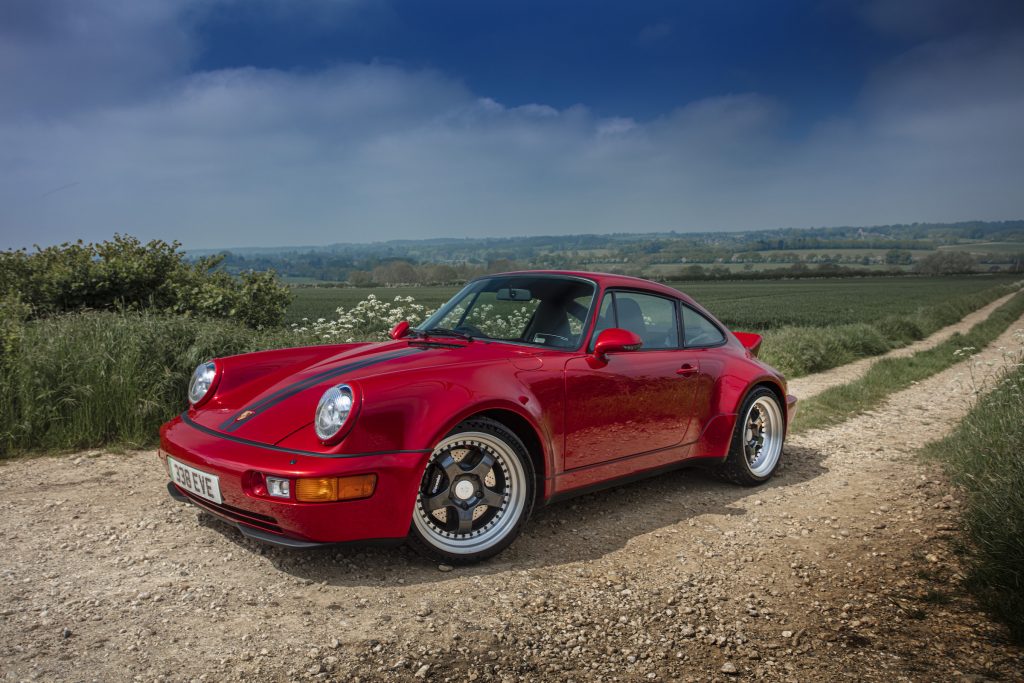
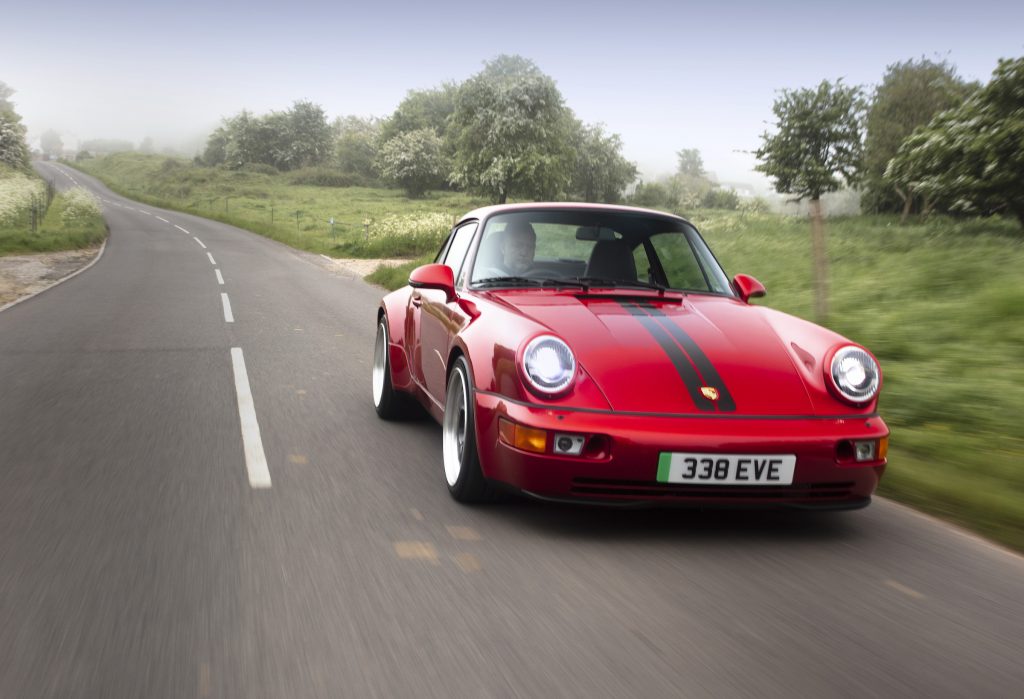
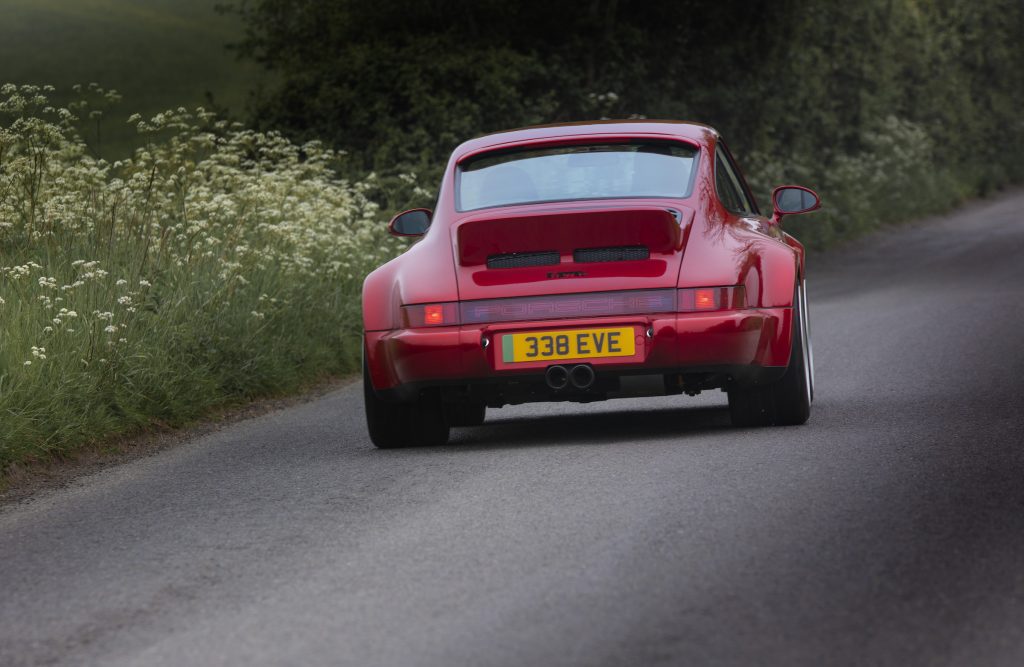
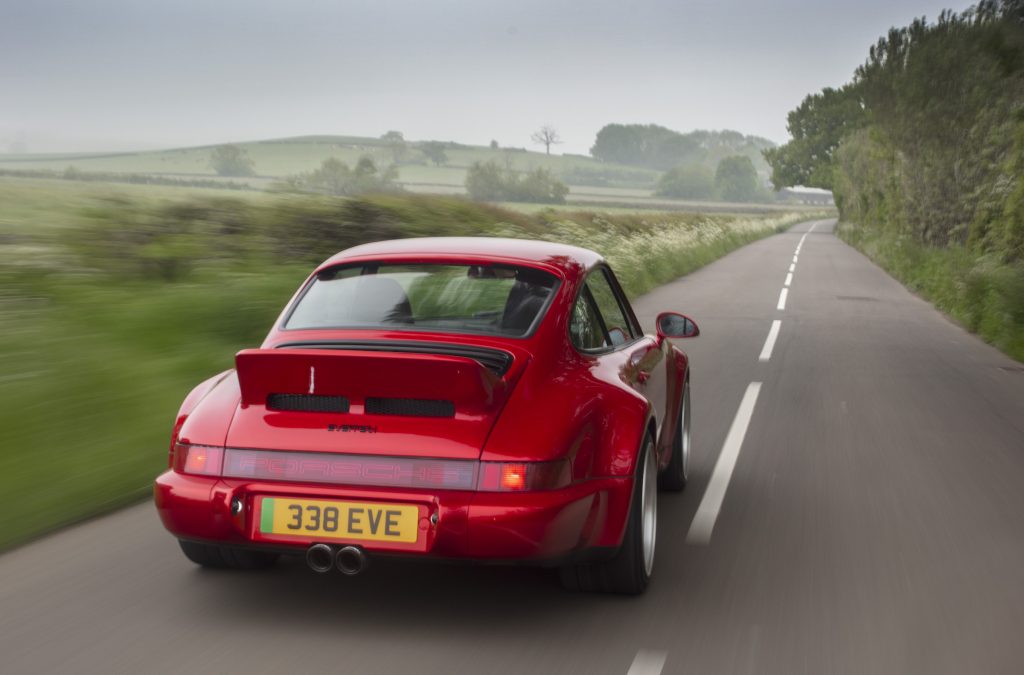
I’m also making an A to A trip as I have only an hour or so before the car is to be whisked off to be shown to some potential clients from the Middle East.
At least I’m near a favourite road, which removes navigation as a variable. It’s a good stretch with flowing bends, a couple of brake-testing sharper corners, some straights to get a boost of acceleration and, hopefully, relatively light on traffic.
Lunny is in the passenger seat, talking about how a double-whammy of his young daughter’s nightmares about climate change and seeing Prince Harry and Meghan Markle swish away from their wedding in Jaguar’s prototype E-Type Zero inspired him to sell up his fintech businesses and start Everrati.
“I just thought wouldn’t it be fantastic if we could find a way of getting people like me – petrolheads – to change what they drive? I’ve had six Ferraris and 12 Porsches and I love cars. Every time I could justify ‘man maths’ to buy something else I would, but the reality is that we all know that we have to change and we all have to get to a point where we are reducing our emissions. It’s all very well saying, oh, it doesn’t matter, because I’m only driving a few thousand miles a year, but a car like the 911 will create its own body weight in CO2 every 1800 to 2000 miles. The only way I think we’re going to get people like me out of their emitting cars, is to find a way to make them engaging, to make them fun, to make them so that, when you switch it off and close the door you have to look back at it.”
There’s no denying that the Everrati 964 has the latter effect, but how does if fare on the former?
The first thing to note is the steering. It’s reassuringly weighty with plenty of feedback, just like a 911’s should be. The brakes, too, have the same feeling I remember – just a fraction of a dead spot before they bite and bite hard. What’s even more remarkable is that at low speed the car can be driven on one pedal, with regenerative braking bringing the car to a complete halt, yet at a higher velocity you get only the kind of gentle reduction in speed you’d expect of backing off the throttle in a high gear.
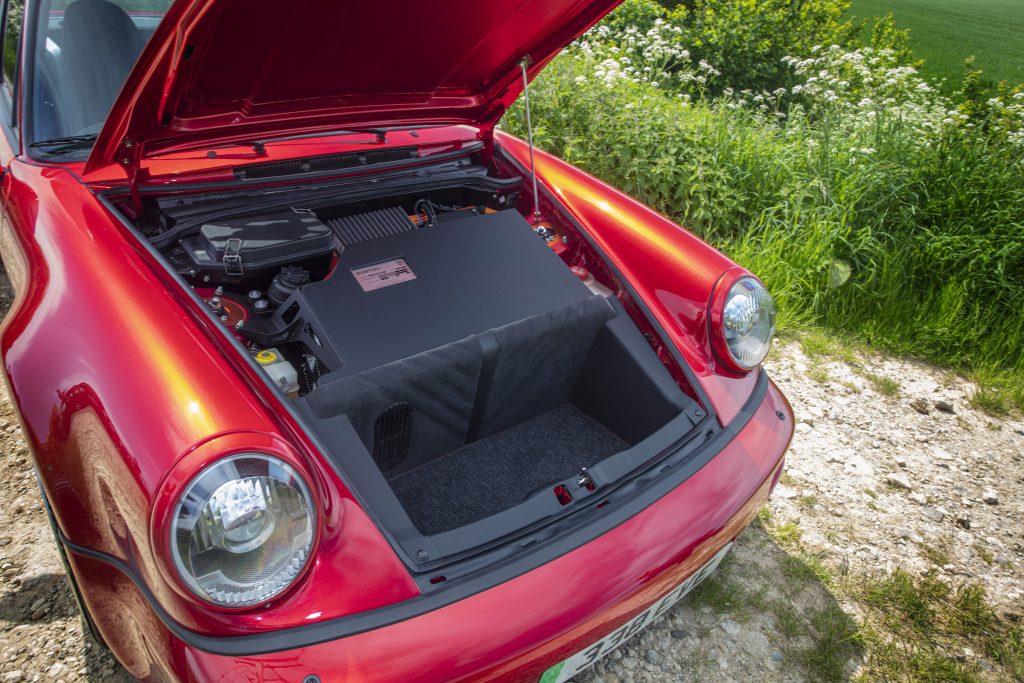
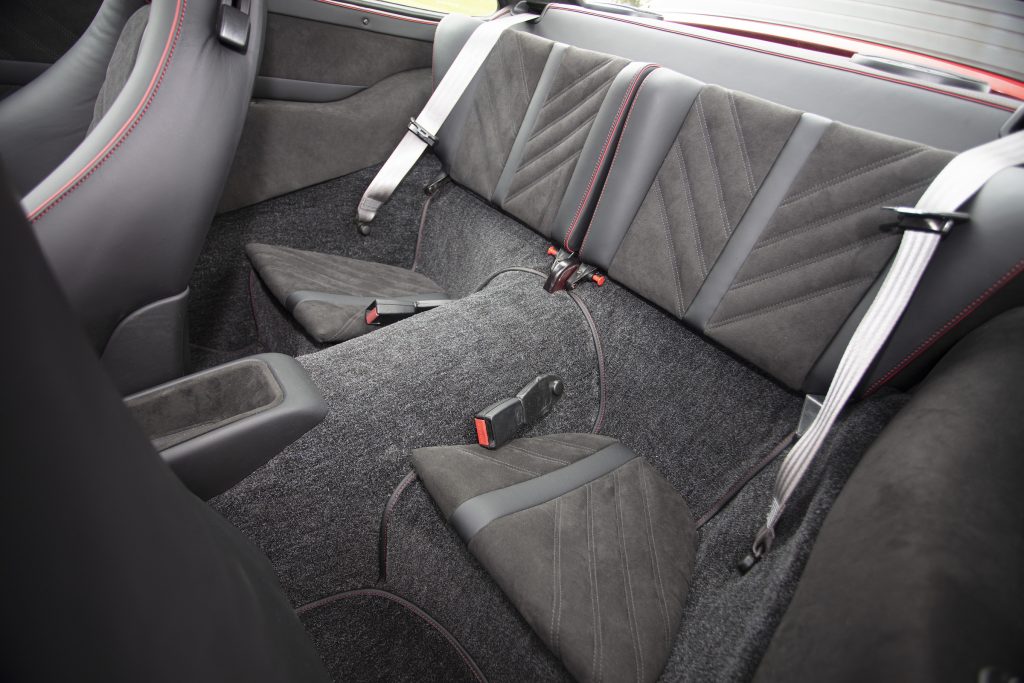
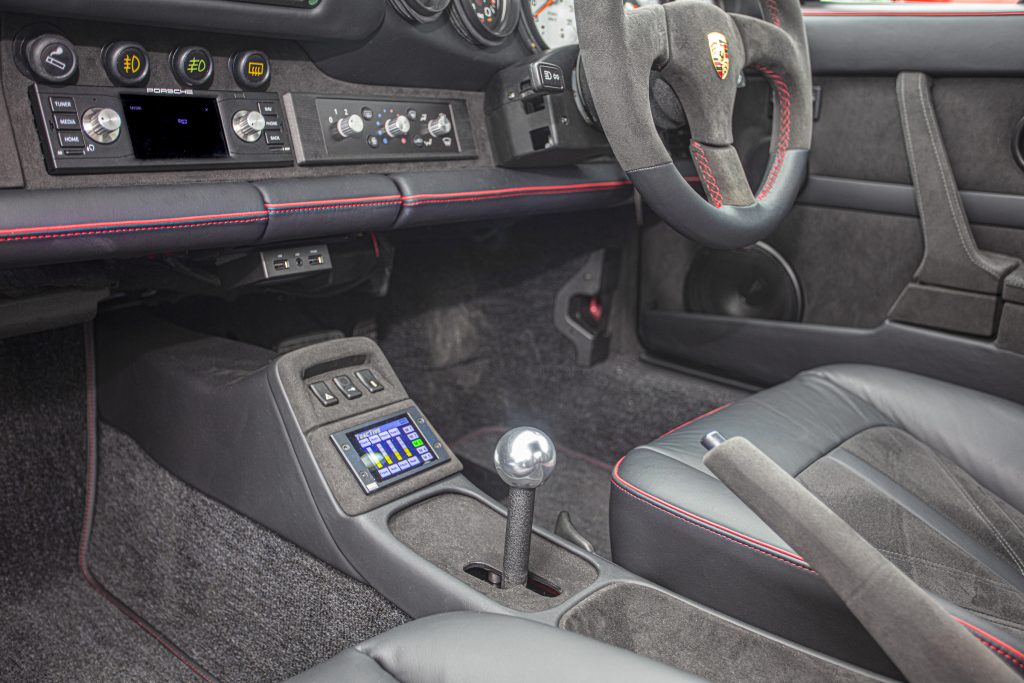
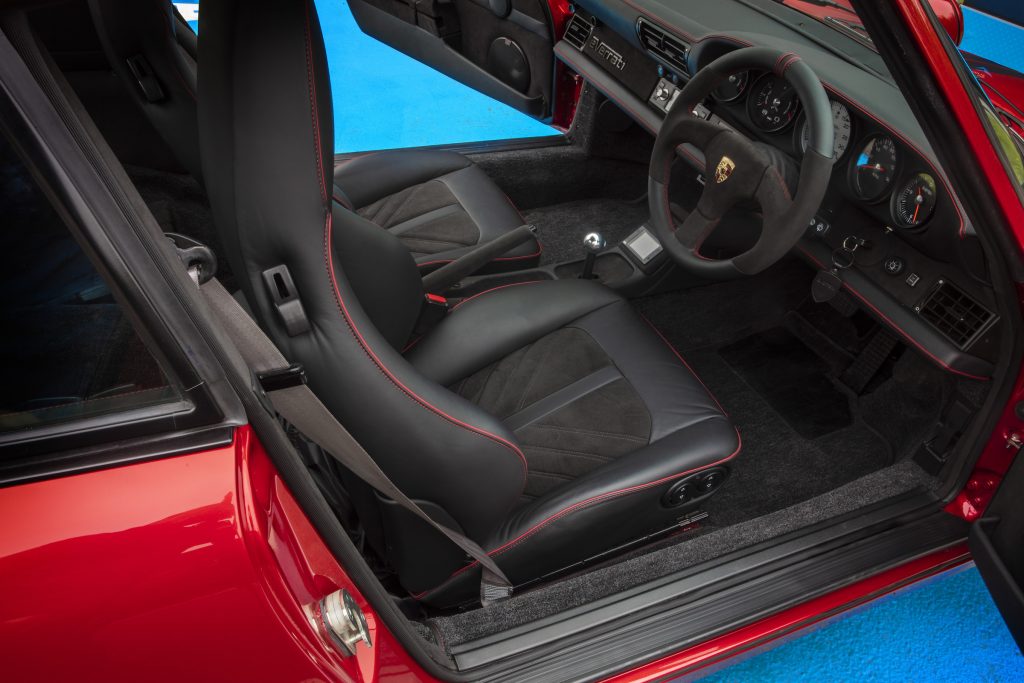
Acceleration is absolutely linear. Push the long-travel throttle down and the speed picks up instantly and, seemingly, relentlessly until you run out of straight road. For the record Everatti has timed the car from zero to 60 mph at around four seconds. Kerr says that he’s currently working on adding steps to simulate gear changes on acceleration and deceleration so that the accompanying synthesised sounds add to the enjoyment.
As it stands, even on its loudest setting, the faux flat-six is quickly drowned out by wind and tire noise, but an additional cabin speaker is under discussion which would make it more audible at speed. Apart from confusing passengers and passers-by I’m not entirely sure how necessary these acoustic antics are, and I think I’d probably embrace the relative quiet of electric propulsion most of the time. Fun for a cars and coffee event, mind.
Driving the Everrati on a twisty road is a far bigger rush than any caffeinated beverage can provide, however. The handling is bang on: step on it as you come out of a corner and you feel the weight transfer as the rear squats down and torque is applied to tyre, to road. Grip is mighty, but I’m told that in the right hands and in the right place (enter Adrian Newey’s speedy son Harrison and a race track) the Everrati will pull seriously smoky slides. For the rest of the time the adjustable suspension, which was tuned with the aid of Tim Harvey, the 911 racer and British Touring Car Championship legend, does a grand job of keeping those ample rubber contact patches in touch with the road.
I’d love to keep going until the batteries run flat, but the car has an appointment with someone who may actually be able to afford the £250,000 price (plus donor vehicle) and I have to return it.
Aside from that near-Singer cost what’s not to like about the Everrati? First, although the car itself feels extremely well put together, with not a hint of squeak and a beautiful finish everywhere you look this prototype has not been entirely problem-free. The instruments aren’t working and my test drive was postponed by a couple of weeks due to a charging issue. That said Everrati is continuing to put the car through a thorough development process and insists customers won’t be de facto test drivers. Finally, while it is very pleasantly surprising just how 911-y it still feels the loss of engine and transmission can’t help but lead to a loss of driver engagement. No heel-and-toe shifts, no whiff of high octane fuel or the prospect of doing a bit of DIY tuning – unless you’re an electrical engineer or coding genius.
On balance, what’s gained by ensuring old cars like this can continue to be driven on our roads is greater than what’s lost. The past has a new future and I like it.
Also read
New Mini conversion electrifies the original city slicker
Electric Triumph Stag and Morgan 4/4 ready for the road
RUF CTR Yellowbird | Modified with Matt Farah








